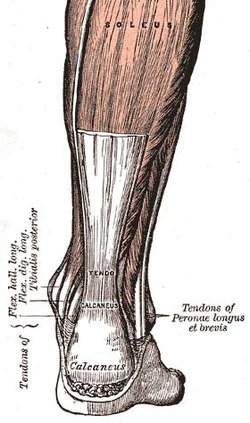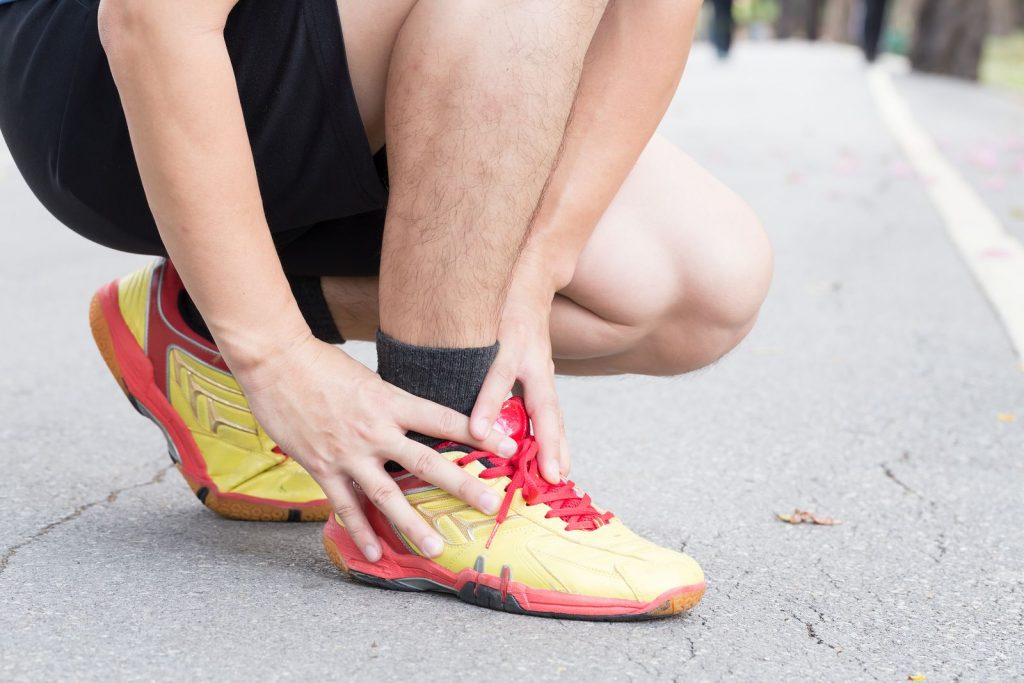Your 4 Stage Guide To Escaping Achilles Tendon Pain
If you’ve ever been debilitated by sharp and/or aching pain in your achilles or heel, then you know it’s certainly not fun.
In fact, it’s every runner’s worst nightmare.
But you don’t have to be a runner to fall victim to a case of achilles or heel pain.
If you’ve suffered heel pain or pain in the lower calf in the past and haven’t been able to fully kick it to the curb – ask yourself the following:
- Do you have pain and stiffness in the back of your ankle/bottom of your calf?
- Do you have any swelling or can you feel a palpable little lump (nodule) on your achilles?
- Do you feel like your strength in that leg has been affected?
- Do you have any redness or does it feel ‘inflamed’?
- Can you move your ankle fully and without pain?
If this sounds familiar, you may be experiencing a case of Achilles Tendinopathy.
In which case, pay attention because this is one of the injuries we see often mismanaged – and if you don’t rehab these cases properly you end up no better off and extremely frustrated!
I’m going to outline briefly today:
- What Achilles tendinopathy is and common myths associated with it
- Why you may not have been able to recover from it – even if you’ve seen an ‘expert’ for help in the past
- A 4-stage protocol we use at Physio Australia which works extremely effectively in providing our patients with a full resolution that you can follow
By following proper tendon management you can avoid the pain, frustration and restriction that affects you physically, mentally and emotionally when you are stuck in pain daily and have to stop doing the things you love.
Instead, after reading this, you’ll have better expectations as to what to do and how long the process can take – hopefully giving you an insight and some light at the end of the tunnel.
So let’s get to it then.
What Is Achilles Tendinopathy?
The term ‘ tendinopathy’ is an umbrella term used to cover different pathologies or problems that can affect a tendon.
There are 3 main sub-categories:
- Tendinitis: acute, local, inflammatory pain from micro tears – usually after an event.
- Tendinosis: a more degenerative style of ‘wear’ on the tendon caused by repetitive activity over time.
- Tenosynovitis: an inflammation of the fluid sheath which surrounds a tendon (we won’t go into it much in this article)
I Tried Rehab, Why Didn’t It Get Better?
My goodness, there could be so many variables to answer this, however the most common ones I see are:
Misdiagnosis
Often a client of mine has seen another practitioner who simply treated it like a muscle ‘strain’ hence little progress.
Thinking “I’ll rest it and it will get better”
No, it won’t.
In the case of tendons, to get the cells which make up the tendon fibres to remodel and heal, you need to give them directions in the language they understand.
The language of cells is force.
Ergo, you need someone who knows exactly what type of force to introduce to the healing tendon, when to apply it and how much of it to do – that’s us by the way, hello 🙂
Giving up too quickly!
Tendon rehab is NOT a quick fix.
If you don’t follow the protocols we use all the way to their completion you simply cannot expect a full result. Always remember with tendons, sometimes you need to take a breath and respect the process.
A 4-Stage Protocol We Commonly Use To Help Your Achilles Tendon Pain
The following isn’t extensive and can vary according to what we might discover when we speak with you about your particular history and assess you.
It is however a good rough guide as to the different types of forces we might apply during different phases of your rehab in order to get those tendon cells to go to work.
Stage 1 – Reduce Pain With Isometrics.
Not always, but often, we will use isometrics, or static hold exercises to gently re-introduce that smoked tendon to a little bit of loading in a way that decreases pain signals to the brain.
An example of this in regards to your achilles would be to push up onto your toes and hold that position for 30-45 secs depending on comfort.
This stage usually lasts 48-72 hours.
Stage 2 – Introduce Strength Training Through A Comfortable Range Of Motion
Here when you’re ready, we’ll start you doing some resisted movements through a range of motion that’s comfortable for you.
This will increase the load on the tissue, which is something we want to do progressively over time.
An example here would be to do some calf raises with a weight that allows you to perform 3 sets of 10-12 reps with pain of less than a ‘4/10’.
It’s important also that we take into account strengthening other supporting muscle groups such as the glutes to help reduce the biomechanical load on your achilles as you progress later to harder activities.
Stage 3 – Increase The Power Output
Once we’ve rebuilt a baseline of strength, it’s time to get those muscles to produce some power by contracting quickly under a time factor.
This is a critically important step that most people miss when it comes to tendons.
You see, tendons NEED to store and use kinetic energy, that’s why they’re somewhat ‘elastic’ in nature.
This is the point where we encourage your tendon to be able to do just that.
At this point you’ll really be feeling a difference in terms of increased strength and decreased pain.
An example for your achilles would be jumping on the spot or doing calf raises over a step as quickly as you can.
Stage 4 – Develop The Stretch Shorten Cycle.
The Stretch shorten cycle refers to a lengthening of a muscle under load followed by an immediate contraction.
This our final stage of rehab and is important to consolidate the final stages of tendon healing and in the case of our athletes – get them ready to return to sport.
An example of this might be a squat jump or lunge jump.
Ready To Escape Tendon Pain?
We Are Your Local Physiotherapists In Highett
Our fully-qualified physiotherapists in Highett provide physiotherapy for everyday people through to professional athletes.
Here’s how the Physio AUS formula works:
- We open with an in-depth assessment of your unique pains, aches and circumstances, which we use to diagnose and prescribe the optimum course of action
- Using this information, we prescribe a unique treatment programme that combines exercises, stretches, physical aids and routine adjustments
- Our work doesn’t stop once your problems subside – if needed, we create ongoing treatments that ensure you continue to enjoy a pain-free life
Whether you’re a world-class athlete or a humble office worker, give our physiotherapists in Highett a call on (03) 9525 6077, or click here to book an appointment.

 1300 392 552
1300 392 552

Leave A Comment